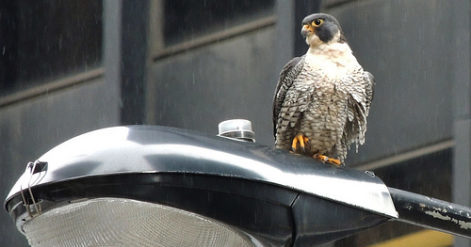
 )
)In the spirit of Thanksgiving, I wanted to highlight a few scientific and technological developments of the past year for which I am grateful. Let’s start with a story I alluded to last week, the shrinking hole in the ozone layer. Changes to the ozone layer were first detected in 1974 and traced to human release of chlorofluorocarbons into the atmosphere. Because ozone helps to shield us from harmful radiation, an international agreement was reached in 1987 to eliminate chlorofluorocarbon usage. As a result of those efforts, the hole in the ozone layer has been shrinking, and was recently observed to be the smallest it has been since 1988. Millions of cases of skin cancer have likely thus been prevented, for which we can all be thankful.
I first encountered the idea of human-pig organ transplants some 20 years ago. I was fascinated, possibly because it sounded more like science fiction than reality, and indeed it was and is a vision for the future. Still, I am hopeful thanks partly to an announcement earlier this year that a significant hurdle has been cleared: retroviruses in the pig genome have been edited out via CRISPR, substantially reducing the risk of a cross-species transplant bring with it cross-species infections. With the demand for transplants growing, I am glad for any progress in making life-saving procedures more accessible. Even if pig organs are not an option for everyone, having them available for some frees up other sources.
Technically this news is a little older, but I just learned about it last week thanks to a trip to the Field Museum: peregrine falcons are making a comeback. Peregrine populations declined dramatically when widespread DDT applications for mosquito control introduced the chemical into the food chain and affecting the thickness of falcon eggshells. Thinner shells reduced the viability of the birds inside, leading to smaller and smaller generations of peregrine falcons. DDT is no longer used, allowing bird populations to rebound. Incidentally, museum collections were a key part of the story; comparing contemporary-at-the-time egg shells with historical specimens at the museum made it possible to observe thinning over time.
Those are a few updates from the scientific community that I am grateful for right now. I’d love to hear from you about developments in science, technology, or your area of study that have you feeling thankful today.
Andy has worn many hats in his life. He knows this is a dreadfully clichéd notion, but since it is also literally true he uses it anyway. Among his current metaphorical hats: husband of one wife, father of two teenagers, reader of science fiction and science fact, enthusiast of contemporary symphonic music, and chief science officer. Previous metaphorical hats include: comp bio postdoc, molecular biology grad student, InterVarsity chapter president (that one came with a literal hat), music store clerk, house painter, and mosquito trapper. Among his more unique literal hats: British bobby, captain’s hats (of varying levels of authenticity) of several specific vessels, a deerstalker from 221B Baker St, and a railroad engineer’s cap. His monthly Science in Review is drawn from his weekly Science Corner posts — Wednesdays, 8am (Eastern) on the Emerging Scholars Network Blog. His book Faith across the Multiverse is available from Hendrickson.

Leave a Reply